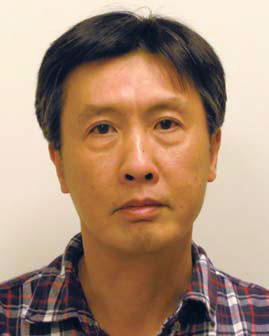
ILLUSTRATION of the operation of all-dielectric optical magnetic mirrors compared to a gold mirror. Unlike the gold surface (right), the cubic dielectric resonators (left) do not induce a phase shift of the reflected electric field at the magnetic resonance.
Sandia researchers performed the first-ever demonstration of magnetic mirrors operating at infrared wavelengths. The mirrors are made from specially designed dielectric metamaterials and reflect light through interaction with light’s magnetic field — a very unusual behavior that leads to strong electric fields at the mirror surface. These new mirrors can be exploited for applications ranging from spectrally selective infrared sensors to high-efficiency optical emitters. The Sandia team used a state-of-the-art ultrafast infrared laser system to directly observe the magnetic mirror effect. (1700) DSA [LDI]

Paiboon Tangyunyong (Pai), the coinventor of a new technique for counterfeit detection of integrated circuits, is the person most responsible for its development, understanding its underlying science and discovering new applications. He has demonstrated the technique to multiple visitors, including the assistant secretary of defense for research and engineering and the Government Accountability Office’s chief scientist. He has also shown the technique’s capabilities at other government agencies that plan to implement it. The technique was briefed to congressional committees. This latest accomplishment in counterfeit detection continues a long history of contributions to the field of Failure Analysis (FA), where Pai is recognized as a world expert in laser-based FA techniques. He has applied these techniques for localization of defects in semiconductor devices manufactured at Sandia for multiple applications. In the past few years, Pai has assumed a consulting role and mentored new staff for FA technology and product support in MESA.